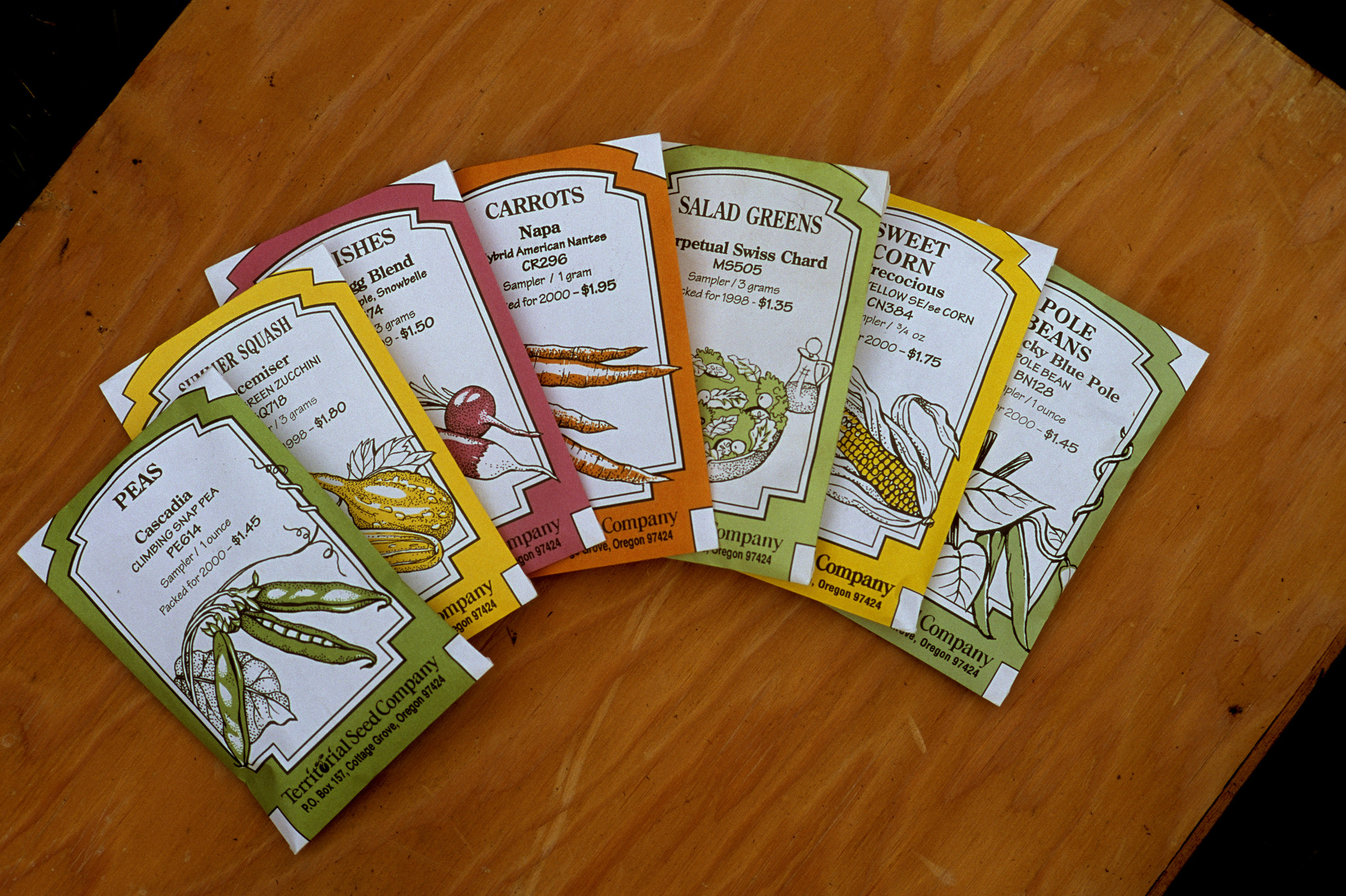Beautiful seed catalogs hit mailboxes every January, tempting gardeners with full-color photos and glowing descriptions. Before you buy, though, read those enticing seed packets.
Nichole Sanchez, Oregon State University Extension Service horticulturist, tells gardeners to plan before choosing seed. It’s so easy to go overboard. Of course, if you do there’s always someone happy to take them off your hands.
Understanding terms associated with seeds will help you pinpoint which selections best serve specific gardens and practices. Sanchez teaches gardeners terms they’ll see on seed packets and other gardening resources.
“Take squash for instance,” Sanchez said. “There are varieties that stay small (for patios and containers) and those that ramble. Vining types might be suitable for creating shade for weed control and moisture retention. For those interested in seed saving, not all vegetable seed is equally reliable. Much depends on the origin of the saved seed.”
Sanchez taught the first session in a series of webinars called Growing Oregon Gardeners: Level Up Series, which is free and open to the public. Live webinars are held each month with the next coming up Feb. 9 on Multifunctional Hedgerows. Classes, which are recorded, are geared to gardeners with some experience.
Sanchez shares the terms she taught in her session on Understanding Seed Characteristics (click on the class name and scroll down to see the recording):
Cultivar. This horticultural contraction means “cultivated variety,” and could represent a plant that is hybrid, heirloom, organic, pelleted, or have any other number of descriptors. The term designates a variety with specific, identifiable, consistent and reliable traits. We know that ‘Merlot’ and ‘Two Star’ are both loose-leaf lettuces, but ‘Merlot’ has deep red, mildly frilly leaves and downy mildew resistance. ‘Two Star’ has bright green, super frilly leaves, makes a much larger plant and has no listed disease resistance.
Heirloom. This term and “open-pollinated” (below) are often used hand in hand, and include the seeds best suited to saving. Heirloom cultivars are just older – 50 or 100 years old (sources differ). Heirloom seeds are often associated with a specific geographic region where they perform especially well, or are cherished. An example is the yellow cabbage collards of the Carolinas. They are preferred by collard connoisseurs for thinner, finer leaves than other collards; seeds for yellow collards are always in short supply.
Open pollinated. Seeds with this designation perform true to type through pollination. True to type means the fruit from the saved seeds – second, third generation and so on – will have the same characteristics as the original seed. Open-pollinated seeds are the best choice for those interested in seed saving. Many open-pollinated seeds are also heirlooms, but not all.
Hybrid. The majority of vegetable seeds available to the home grower are hybrids, which is not equivalent to GMO. Through breeding methods, traits from different varieties are combined. This is how cultivars are developed with specific characteristics for size, color and disease resistance. Hybrids are often high yielders, and confer benefits to the gardener, but they are not reliable for seed saving. Because they are the result of a cross between two parent plants, seeds from the fruit of a hybrid plant contain a mix of genetic traits. Sometimes, the seeds don’t sprout at all, or don’t progress past the seedling stage. Others may produce fruit, but it will look or taste different than expected. Hybrids are not suggested for seed saving.
Resistance. Resistance and tolerance to plant diseases are tools gardeners use to combat disease with minimal chemical inputs. Finding seeds with disease resistance is especially helpful if a particular disease has surfaced in the garden multiple times, or for any disease that is carried in soil. Not every cultivar has disease resistance, and some are resistance to multiple diseases. Most seed catalogs and websites have charts for each vegetable type that list relevant diseases and the abbreviations to look for in the plant descriptions. For example, seed descriptions with “BLS” at the end would be resistant to bacterial leaf spot, a disease that occurs in numerous vegetables.
Increased interest in vegetable gardening last year has resulted in limited numbers of some seed types for home gardeners this year, Sanchez said. Early planting is not encouraged, but early ordering might be worthwhile, if possible.

